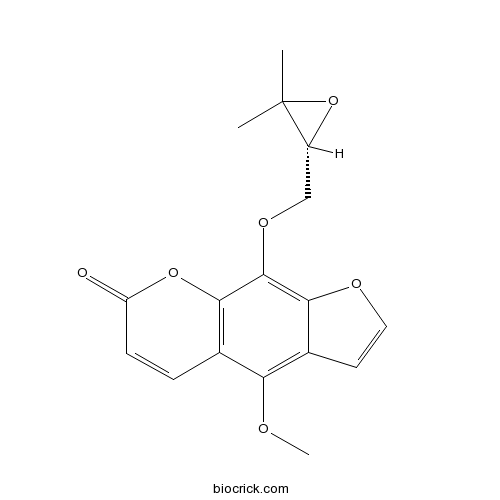Angelica apaensis
Angelica apaensis
1. The products in our compound library are selected from thousands of unique natural products; 2. It has the characteristics of diverse structure, diverse sources and wide coverage of activities; 3. Provide information on the activity of products from major journals, patents and research reports around the world, providing theoretical direction and research basis for further research and screening; 4. Free combination according to the type, source, target and disease of natural product; 5. The compound powder is placed in a covered tube and then discharged into a 10 x 10 cryostat; 6. Transport in ice pack or dry ice pack. Please store it at -20 °C as soon as possible after receiving the product, and use it as soon as possible after opening.
Natural products/compounds from Angelica apaensis
- Cat.No. Product Name CAS Number COA
-
BCN5015
Byakangelicol26091-79-2
Instructions

-
BCN2698
Oxypeucedanin hydrate2643-85-8
Instructions

-
BCN9028
Byakangelicin482-25-7
Instructions

Molecular systematics of Angelica and allied genera (Apiaceae) from the Hengduan Mountains of China based on nrDNA ITS sequences: phylogenetic affinities and biogeographic implications.[Pubmed: 19440815]
Maximum parsimony, maximum likelihood, and Bayesian analyses of nuclear ribosomal DNA internal transcribed spacer sequences were used to infer the phylogenetic affinities and historical biogeography of Angelica and its allies (Apiaceae tribe Selineae), with emphasis on those species of Angelica and Peucedanum endemic to the Hengduan Mountains of south-central China. Results of these analyses corroborate a monophyletic Angelica (Angelica sensu stricto) upon the inclusion of Coelopleurum, Czernaevia, and one of two examined species of Ostericum, but with the exclusion of several species previously attributable to Angelica. Angelica oncosepala and A. likiangensis arise within the genus Heracleum in tribe Tordylieae; the former is recognized under its original name, Heracleum oncosepalum. Angelica sinensis, A. tianmuensis and A. paeoniifolia arise within the Sinodielsia clade of previous circumscription, closely related to Levisticum officinale. Angelica anomala is a sister group to Ostericum grosseserratum in the previously delimited Acronema clade. Angelica apaensis and A. decursiva, taxa whose phylogenetic affinities have previously been controversial, are confirmed within Angelica. Northeast Asia (including Japan, northeast China, Korea and adjacent areas of Russia), Western Europe, and North America are inferred to be ancestral areas of Angelica based on optimal solutions of a dispersal-vicariance analysis, with the Hengduan Mountains likely providing a refugium for Angelica during the latter part of the Tertiary.
Two new coumarin glucosides from the roots of Angelica apaensis and their anti-platelet aggregation activity.[Pubmed: 17703728]
Two new coumarin glucosides, 11-O-beta-D-glucopyranosyl thamnosmonin (1) and 12-O-beta-D-glucopyranosyl gosferol (2), were isolated from the roots of Angelica apaensis. Their structures were elucidated spectroscopically. Both compounds showed weak inhibitory effects on rabbit platelet aggregation induced by PAF, AA and APD.


